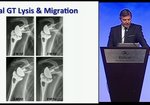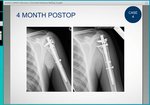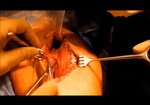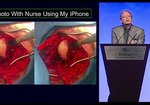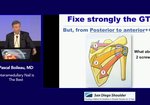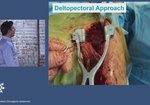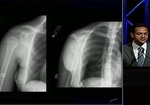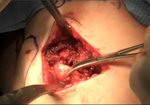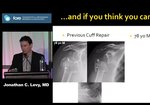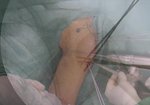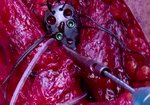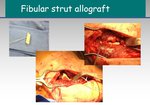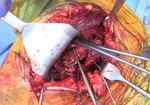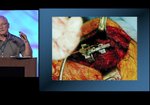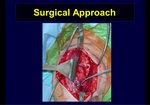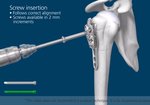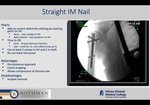Playback speed
10 seconds
Posterior Fracture Dislocation of the Shoulder: A Modified McLaughlin Procedure
0 views
May 22, 2016
Purpose:
Bilateral posterior fracture dislocation is a rare injury commonly associated with seizures. When the ...
read more ↘ humeral head defect (reverse Hill-Sachs lesion) is between 20 to 45%, operative fixation using a modified McLaughlin procedure is recommended. This video demonstrates a case of bilateral posterior fracture dislocation following a drug-induced seizure treated with a modified McLaughlin procedure.
Methods:
The original McLaughlin procedure involved transfer of the subscapularis tendon from the lesser tuberosity to the reverse Hill-Sachs defect. However, the modified McLaughlin procedure is more commonly described in the literature as of late, and involved the transfer of the lesser tuberosity along with the subscapularis.
Results:
This video demonstrates the modified McLaughlin technique for a posterior fracture dislocation. CT scan confirms the articular impression fractures of the proximal humerus. Through a deltopectroal approach, the lesser tuberosity along with the subscapularis tendon was transferred into the defect.
Conclusions:
The modified McLaughlin procedure demonstrates excellent clinical and radiographic results following posterior fracture dislocation of the shoulder with a reverse Hill-Sachs lesion between 20 and 45%.
↖ read less
Bilateral posterior fracture dislocation is a rare injury commonly associated with seizures. When the ...
read more ↘ humeral head defect (reverse Hill-Sachs lesion) is between 20 to 45%, operative fixation using a modified McLaughlin procedure is recommended. This video demonstrates a case of bilateral posterior fracture dislocation following a drug-induced seizure treated with a modified McLaughlin procedure.
Methods:
The original McLaughlin procedure involved transfer of the subscapularis tendon from the lesser tuberosity to the reverse Hill-Sachs defect. However, the modified McLaughlin procedure is more commonly described in the literature as of late, and involved the transfer of the lesser tuberosity along with the subscapularis.
Results:
This video demonstrates the modified McLaughlin technique for a posterior fracture dislocation. CT scan confirms the articular impression fractures of the proximal humerus. Through a deltopectroal approach, the lesser tuberosity along with the subscapularis tendon was transferred into the defect.
Conclusions:
The modified McLaughlin procedure demonstrates excellent clinical and radiographic results following posterior fracture dislocation of the shoulder with a reverse Hill-Sachs lesion between 20 and 45%.
↖ read less
Comments 9
Login to view comments.
Click here to Login

